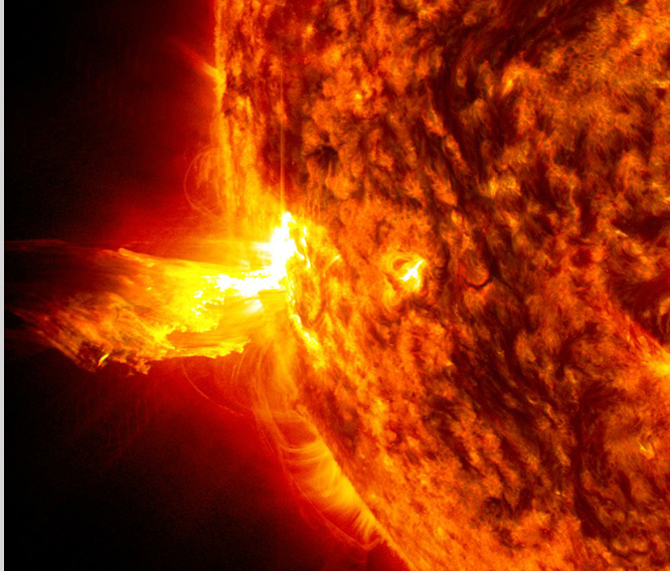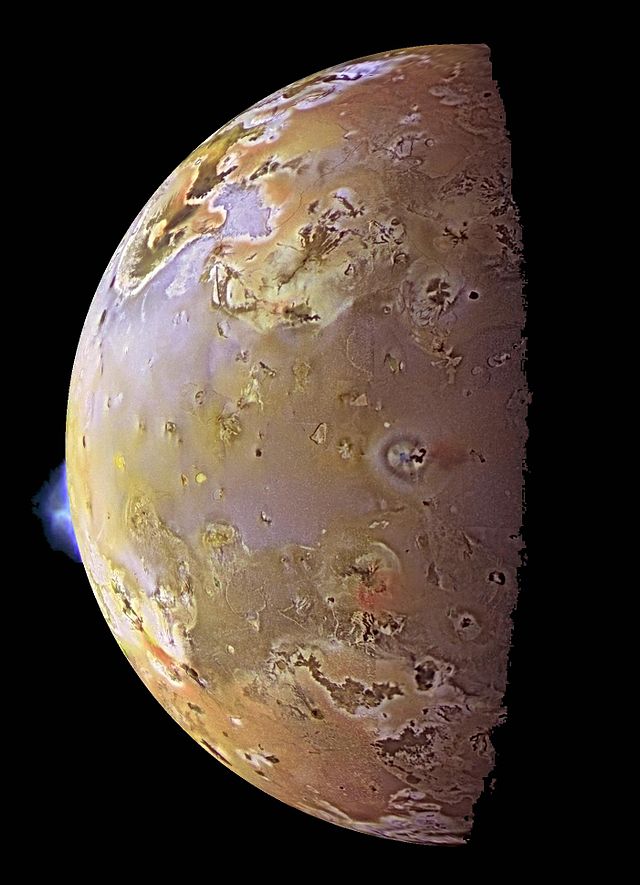Seismology – using the propagation of waves through bodies to work out their internal structure – is extremely useful. You can use it to find oil, track active faults or understand what is at the centre of the earth. The principles and mathematics developed by studying the earth apply to other bodies too. The Moon, Mars, even distant stars: seismology can help us understand these bodies also.
Moonquakes
Let’s start close to home. As part of the Apollo moon-landings a series of seismometers were installed and collected seismic data for nearly 8 years. The vibrations were caused by small moon-quakes and meteorite impacts. To help things along (and to assist with calibration) a few pieces of rocket and the ascent stages of several lunar modules were deliberately crashed into the moon (once they were no longer needed, as the NASA page helpfully points out).
The moon is not tectonically active in the way the earth is – most moonquakes had Richter scale magnitudes of less than 2. Events not caused by collisions were clustered on a monthly cycle, suggesting they were caused by changes in tidal forces as the moon orbits the earth. The discovery of some recent tectonic features (found in imaging from the Lunar Reconnaissance Orbiter) suggests something else is going on. Perhaps cooling and contraction of underground melt is causing these surface features to form.

Diagram of the moon’s interior. From Wikipedia.
This precious data was recently re-processed using the latest seismic techniques to tease out new details of the lunar interior. The seismic data was ‘messy’, due to smearing of signal in the upper 20 km of the crust, which is heavily fractured due to meteorite impacts. Modern processing allowed a clearer picture of the moons interior to be taken. It contains a metallic core, partly molten, but also a layer of molten rock at the base of the mantle.
Knowing the interior of the Moon is important for understanding the earth too. The most popular model for the Moon’s origin involves a massive impact between the earth and another body. We need to know what ended up in both the Moon and the earth to understand this process. It’s also interesting to reflect on the fact that the Moon is smaller than – and so would cool faster than – the earth. So why is it molten at the base of the mantle and the earth is not? A recent paper suggests the molten layer persists due to frictional heating of the moon from tidal forces. The same process (but stronger) heats up the moons of Jupiter, for example creating volcanoes on Io1.
Marsquakes
Mars is the only planet inhabited solely by robots2. The first Martian robot3, the Viking lander, had a seismometer stuck on the leg. Sadly it wasn’t very sensitive and didn’t detect any marsquakes at all (just a lot of wind). The NASA InSight mission aims to put this right, landing sensitive instruments (including a seismometer) in 2016.
Starquakes
Seismology is a useful tool for studying stars.

Our sun looking turbulent. Image from NASA.
Yes, it really is.
There are no seismometers on the sun – they wouldn’t survive long4 – but it turns out that the same principles and mathematics we use to probe the earth also work on stars.
Asteroseismology is a form of seismology that uses pulsations in the light from stars to infer their internal structure. The outermost portion of a star is extremely turbulent and causes the entire star to vibrate like a dog waiting for a stick to be thrown. Instead of measuring the vibrations directly, we infer them from tiny variations in the intensity of the light, which we can measure from the delicious cool of our planet.
Sound waves (P-waves to seismologists) can be measured in both planets and stars. The sun has more exotic types of waves too and using these together gives us an invaluable view of the star’s internal structure. This in turn can be used to infer its age.
Similar techniques have been applied to Jupiter, which is also a ball of gas with something mysterious inside. Here the waves are detected by direct viewing of the surface5, as illuminated by the sun. The picture we’ve got so far is still rather fuzzy, but consistent with what we’d already guessed was there (a rocky core surrounded by metallic Hydrogen and then a Hydrogen and Helium atmosphere).
The Kepler missions search for planets orbiting other stars is linked to asteroseismology. The planets are discovered by the faint dimming effect as they pass in front of stars (the transit method). To do this we need to accurately know the size of the star and asteroseismology is the best way to do this. The ability to know the age of the star is useful too. Only a planet circling a relatively old star will have had enough time for life to evolve. The dream is of course to find a planet with intelligent life. If there is one, they are surely doing seismology. It’s such a useful technique to understand what lies beneath the surface of things.


Pingback: » What’s up? The Friday links (62)